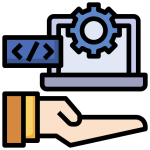Adapting the general definition of a rug pull to crypto, the term thus means a sudden and deliberate withdrawal of support for a cryptocurrency project by its core development team. Whdrawal of liquidity from the project’s treasury or coffers often follows this action, thereby leaving investors exposed to losses. In this guide, inside the dirty world of bitcoin mining you will learn about cryptocurrency-related rug pull scams. We’ll delve into what they are and why you should be knowledgeable about them to avoid becoming a victim. Also, we’ll highlight a few noteworthy examples of crypto rug pulls that have hit mainstream headlines to show and prove the consequences of such schemes.
Hence, it is your responsibility to educate yourself to better protect your investment. The promoters ended up with a horde of about $3.38 million and deleted their online presence, including all their social media pages and website. Following their exit, the token’s price plummeted by 99.99% before being delisted from the popular crypto analytics website CoinMarketCap. According to a report by blockchain intelligence firm Chainalysis, cryptocurrency rug pulls alone accounted for a loss of $2.8 billion back in 2021, which equates to an average daily loss of $7.67 million. The project sold crypto education courses attached to tokens that could supposedly “mine” the OneCoin crypto.
- This feature ensures that owners are unable to send the tokens to trading platforms for selling.
- Learn how to apply machine learning techniques to develop, test and implement crypto algorithmic trading strategies.
- There are several versions of this scam, but the end goal for the scammers is to exit with the most amount of tokens.
In the SQUID rugpull, founders were able to drive the price of their token up to over 75,000%, before dumping the token at a high of just over $2,860. By thoroughly investigating the code line by line, smart contract audits reveal any what is a cryptocurrency matching engine and how does it work underhand tricks designed to defraud investors. Rug pulls are common with decentralized finance (DeFi) since anyone can create their application. Essentially, the freedom of free use makes DeFi more prone to these crypto scams.
What Does an Unruggable Project Mean?
With the price of the token in freefall, it becomes apparent that the project has been rugpulled, and investors are left with nothing but their head in their hands. Typically, a rug pull begins with the creation of a new cryptocurrency token that gets listed on a decentralized exchange and paired with a coin from a leading platform, such as Ethereum. Fraudsters then utilize the marketing powers of social media, launching a buzz-worthy, hype-filled promotional campaign across a myriad of channels to bait a community of investors.
Thodex Crypto Exchange
Liquidity pool creators attract more investors by promising higher percentage yields. After they have amassed adequate funds in the pools, they pull out or withdraw them to other addresses. The funds are then changed hands in other exchanges and made undetectable to the victims.
Crypto rug pulls are illegal worldwide, and law enforcers would act if they smoked out the offenders in their jurisdictions. For example, the Greater Manchester Police in the UK detained a 23-year-old male and a 25-year-old female linked with the StableMagnet rug pull in 2021. The enforcers seized $22.25 million in ETH after obtaining intelligence, which led them to hardware wallets containing the assets. Then, these developers would list their token and create a pool on decentralized exchanges like Uniswap or Pancakeswap, which allows anyone to do so. Scammers are constantly working on new ways to make away with your hard-earned money.
Liquidity Stealing
In order for a project to be deemed “unruggable,” it means that there aren’t a significant amount of tokens help by the development team. Without the signature large amount of team-held tokens that could be taken in a rug pull or exit scam, a project could be considered unruggable. A rug pull is a type of scam where developers abandon a project and take their investors’ money. Also, the ANKH/ETH liquidity pool was drained, leaving token holders with worthless tokens they could not immediately sell. Squid Game (SQUID) was a controversial cryptocurrency project with an aim to take advantage of the popularity of the unrelated South Korean Netflix TV series that aired back in 2021. The token, dubbed a ‘play-to-earn’ token, was created to reward users for their participation in online games.
The pool, which typically comprises of two tokens, will allow traders to deposit one token in exchange for the other. In this case, if the project is new, a trader will deposit a popular asset such as Bitcoin (BTC) or Ethereum (ETH) in exchange for the pool’s token. GitHub is the code base for most crypto projects, typically showcasing their development activities. It is also essential to watch the project’s social media websites like Telegram, Twitter, Facebook, Instagram, and more. If the project is experiencing a dormant phase of activities and is a fork of another project, thread cautiously.
Basically, a liquidity pool is a collection of investor funds locked in token pairs to facilitate trades between various digital assets. Token pairs typically include popular crypto, like USDT, BNB, and ETH, since they are well-established crypto assets with high utility and liquidity. To entice investors to lock their assets and act as liquidity providers (LPs), front end vs back end development DEXs charge trading fees on transactions. LPs are awarded a certain percentage of the trading fees in return for providing liquidity. DeFi projects often leverage smart contracts, agreements run by computer codes instead of legal systems. While this setup minimizes transaction costs and human errors, it leaves some recourse for bad actors to pull the trigger.
Projects that have passed auditing often publish their reports to boost investor confidence. Evolved Apes was a popular NFT project whose initial drops sold out in under 10 minutes. In September 2021, one week after the launch, “Evil Ape,” the project owner, pulled 798 ETH (worth $2.7 million then) of investor funds. In a series of transactions, the owner withdrew funds for project-based expenses, like paying artists, marketing, creating the much-hyped fighting game, and more. The founder also took down the project’s website and social media pages as part of the game.
The best way to store your hard-earned crypto is a hardware wallet, like us! We give you complete control of your digital assets, allowing offline storage for the ultimate security. Once they’ve pocketed your cash, the project mysteriously comes to a stand-still. Pulling the rug out from you, its hopeful investor – you may also know this as a pump and dump scheme, or shilling.
Anyone can list any asset and there is no regulatory authority in place to insure the project is real. So while there are far lower barriers to entry for regular people like you and me, there’s also no one to tell you if a project is looking to scam you. OneCoin represents one of the largest cryptocurrency-related Ponzi schemes in the history of the nascent industry. Founded in 2014 by Bulgarian Ruja Ignatova, the project purported to be a cryptocurrency company with a coin that could be mined and used for payments like Bitcoin. The exchange managed to gain close to 390,000 active users back in April 2021, when it unexpectedly disabled withdrawals. You can detect feature limits by initially purchasing a small amount, testing, swapping, or selling it within the project.
These scams cause financial losses for investors, as creators abandon the project, leaving NFT holders with worthless assets. A common practice for most upcoming crypto projects are to lock the tokens allocated to the team to prevent dumping or even theft from the team members or hackers. If a project’s smart contract launches without the provision of a locking mechanism for the tokens, that is a red flag. There is little stopping the developers from taking their tokens and dumping them in the market as soon as they are able to.
They could limit sell orders right from the start of the investment period or much later when they are looking to lock in their spoils. OneCoin was fundamentally a massive Ponzi scheme, which now stands out as the biggest cryptocurrency scam – almost $25 billion in investor funds were lost. Although law enforcers unearthed the OneCoin scam and even arrested its managers in 2017, most of its core members disappeared into thin air. It claimed to have links with official Pokémon partners TopDeck, offering recolored versions of Pokémons. They offered play-to-earn games, real-world travel, comics, and even a secret Netflix project. All these were topped off with 15 Legendary card NFTs that promised to generate their holders fixed income monthly for the rest of their lives.
The rug pull of this kind is more common with trading platforms where scammers have access to the backend to enable and disable trades or withdrawals. This scam typically takes place on decentralized exchanges to minimize the chances of authorities tracking it. Reputable crypto projects often allow independent security audits or financial transparency reports to advance their authenticity. For example, Cardano went through several audits and an independent source code audit to boost investor confidence. Nevertheless, a crypto project without an external audit report isn’t automatically fraudulent.
Trust Wallet is a crypto wallet software that gives its users complete ownership of their crypto funds. Knowing the identity of the team behind a project gives investors extra confidence to support the startup. It is, however, possible for a project to run effectively with little to no knowledge of those promoting it. A case in point is Bitcoin, whose creator(s) is still unknown more than a decade later. AnubisDAO was a dog-themed cryptocurrency project which forked from the older OlympusDAO. The project came along during the dog-themed token craze of the second half of 2021, with the project conducting its crowdfunding in late October of the same year.

 Brand & Design
Brand & Design Digital Products
Digital Products Digital Services
Digital Services OTT Subscription
OTT Subscription Theme & Plugin
Theme & Plugin Website Design
Website Design